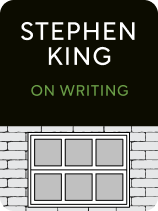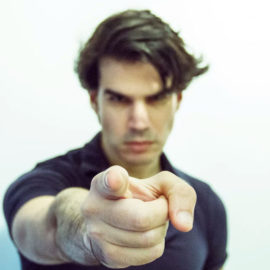

This article is an excerpt from the Shortform summary of "On Writing" by Stephen King. Shortform has the world's best summaries of books you should be reading.
Like this article? Sign up for a free trial here .
For Stephen King, symbols are an important part of every story. But how does he incorporate symbols into his writing, and how can you work on this skill in your own writing?
Stephen King’s symbols are intentional and add another layer of depth to the stories. As you work on your own craft, you should also consider including symbols.
Read more about Stephen King, symbols, and how to use them in writing.
Stephen King: Symbols and More
Beyond the three basic elements of narration, characters, and dialogue, the writing toolbox contains many more tools, ones you remember from English courses—themes, symbolism, alliteration, stream of consciousness, repetition, back story, and so on. Stephen King’s use of symbols is clear in every story.
King’s advice on these tools is to make use of any tool that will enhance your story. Yet don’t go too far—remember that the point of the story is to tell a story, not to show how many words you can alliterate.
Often, you’ll see opportunities to add literary flourishes after completing your first draft. Patterns that you weren’t previously conscious of may now appear. Your revision is a chance to polish these.
King focuses on two devices in particular: symbols and themes. While you might have unsavory memories of expounding on both in your English essays, they’re both natural parts of storytelling and can be quite simple.
Symbols
Symbolism is the use of an object or word to represent an idea other than its literal meaning. (Shortform note: For instance, the white color of the whale in Moby Dick is typically a symbol of beauty and virtue (as in Italian marble and weddings), but in nature the color white often belies a terrifying destructiveness (as in polar bears and great white sharks).)
Like other literary devices, Stephen King says symbols enrich the story. They also become a focusing device through the story, providing yet another opportunity for telepathy.
Again, adornments merely adorn; they are not the reason the story exists. Don’t premeditate your symbols before you write the story—it’ll feel artificial. Instead, discover the symbol as you unearth your story. As you write or revise, if you notice the symbol, then bring it out further and polish it, as though you were excavating a gem.
Commentary From Stephen King: Symbols in Two Books
- While writing The Green Mile, King quickly realized the story was about an innocent man being executed for a crime he didn’t commit. He changed the character’s name to J.C., a symbol of the “most famous innocent man of all time” (Jesus Christ). (Some criticized this as simplistic symbolism; King responds that he’s never trying to be an intellectual.)
- In Carrie, King noticed only after writing that blood perfused the story: at the beginning (when Carrie has her period), at the climax (a prank dousing Carrie with pig’s blood), and the ending (where a survivor of Carrie’s wrath has her own period). King wasn’t conscious of this pattern while writing, but found it meaningful when revising. He tried to connect blood to its many connotations—sacrifice, women’s coming of age, heredity.
For Stephen King, symbols are a necessarily part of writing a book.

———End of Preview———
Like what you just read? Read the rest of the world's best summary of Stephen King's "On Writing" at Shortform .
Here's what you'll find in our full On Writing summary :
- Stephen King's personal writing habits that led to superstar books like Misery and It
- How to make a story and characters feel real
- Why you should never use adverbs






